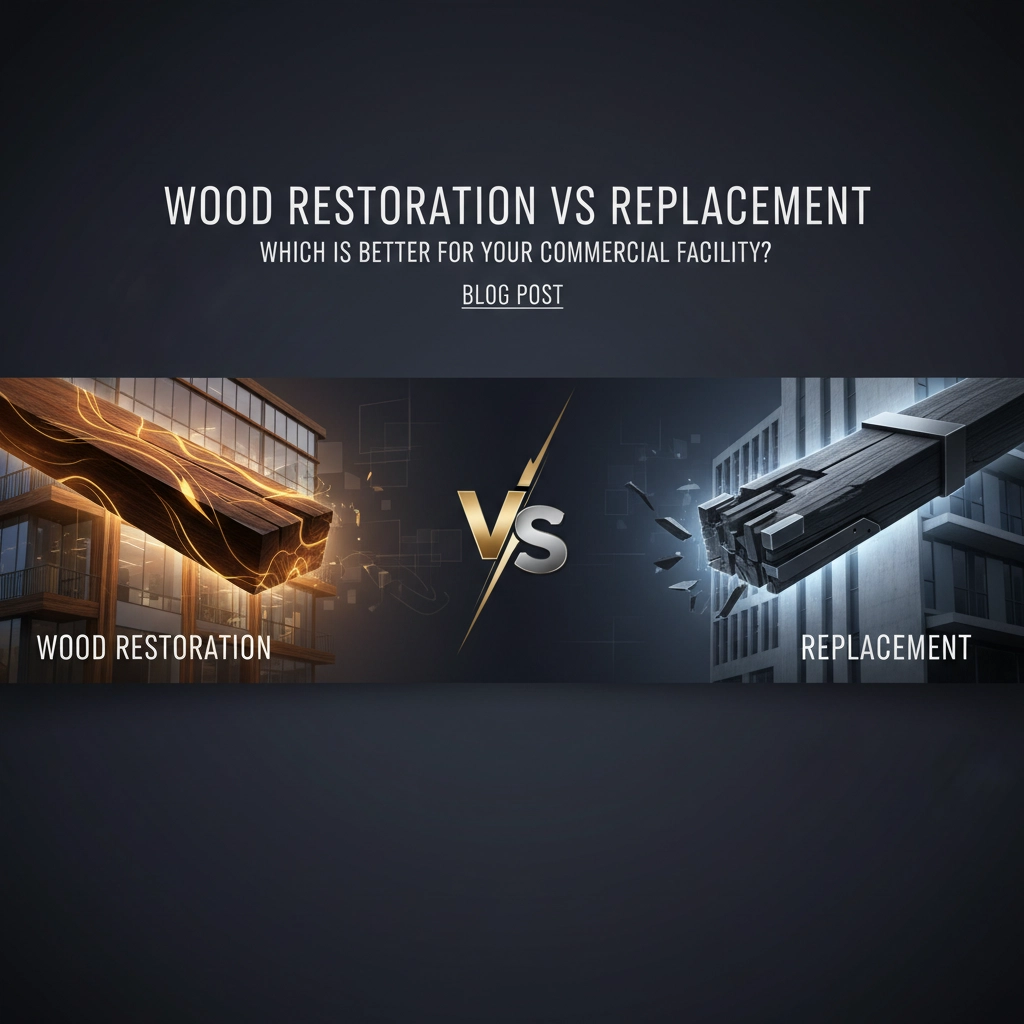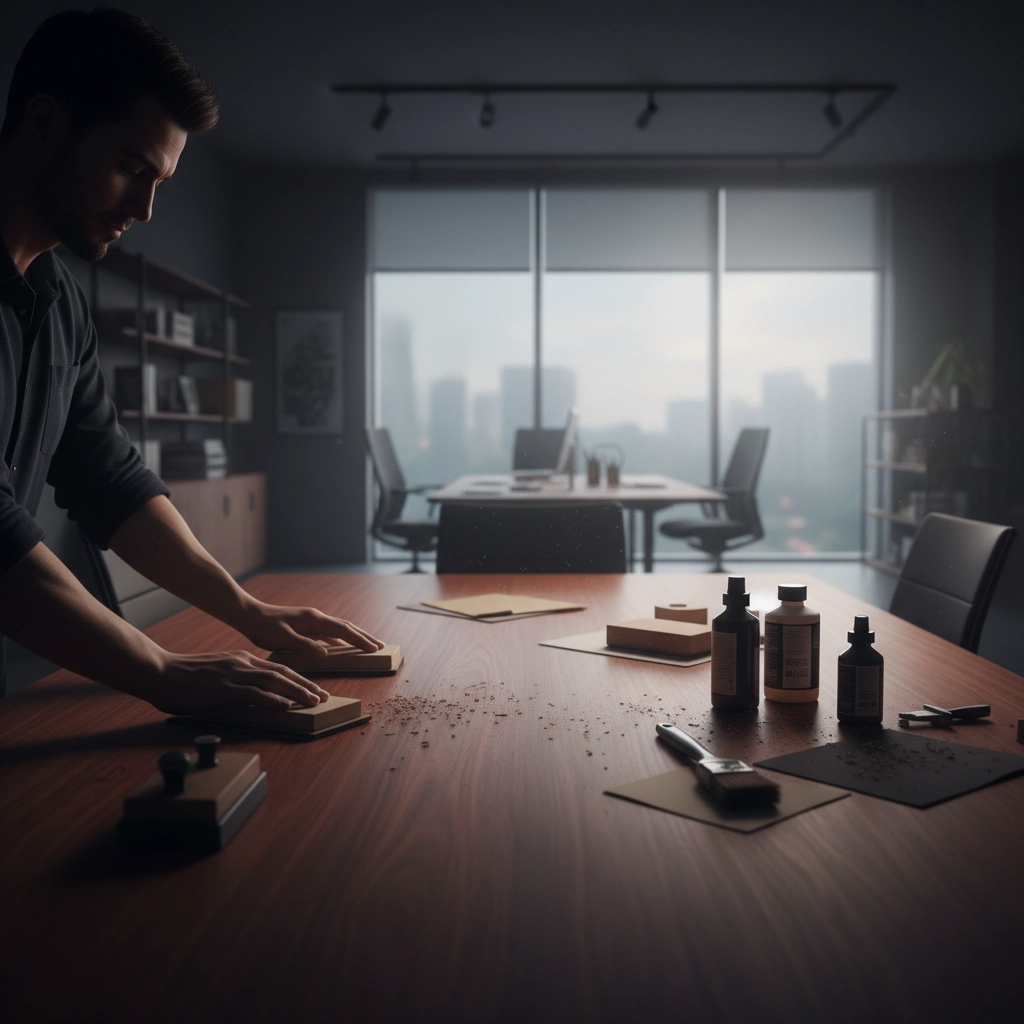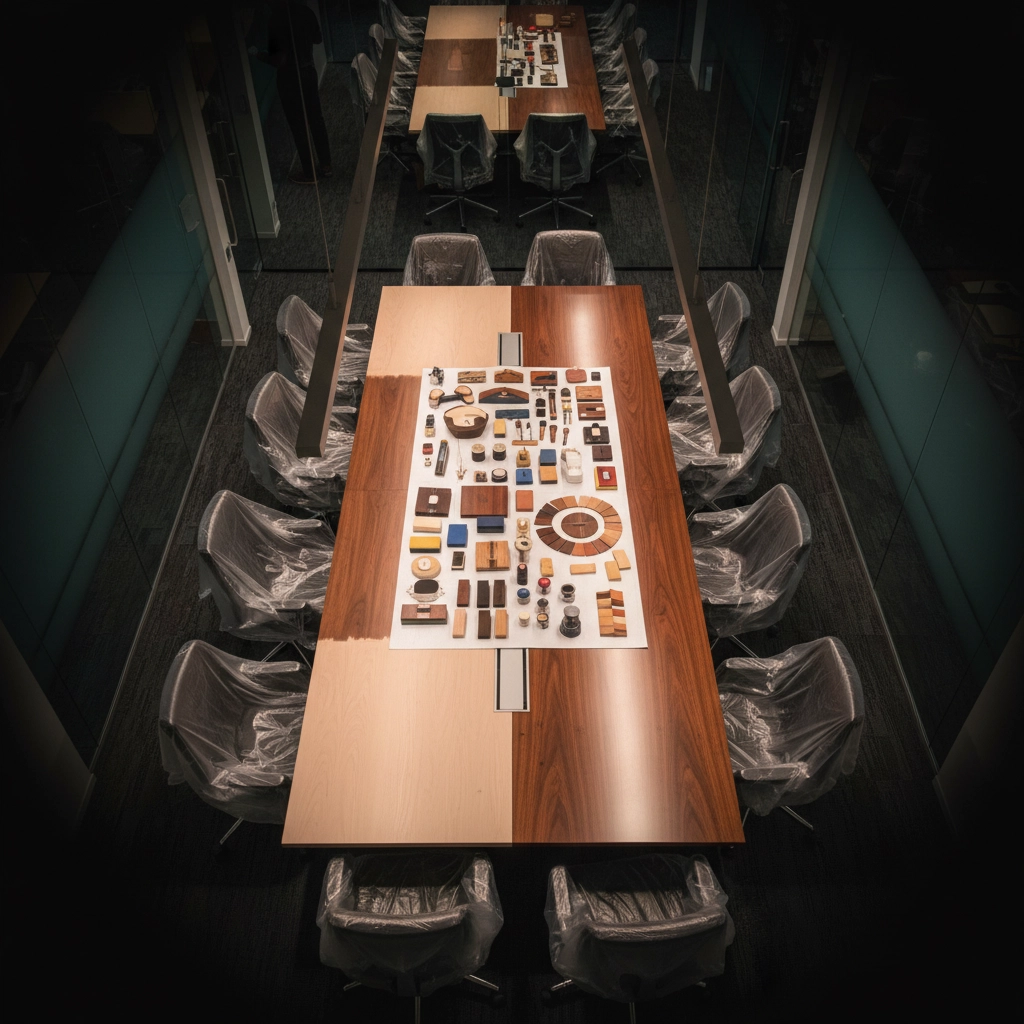Proficiency Blog
Click to edit and add HTML code. Personalize your website!
Wood Restoration Vs Replacement: Which Is Better For Your Commercial Facility?

If you manage a commercial facility, you've probably faced this dilemma: your wood doors, furniture, or millwork are showing their age, but you're not sure whether to restore them or replace them entirely. It's a decision that affects your budget, your timeline, and your building's professional appearance.
The truth is, wood in commercial spaces takes a beating. High-traffic areas like lobbies, conference rooms, and office spaces see constant use, leading to scratches, dents, water damage, and general wear. But here's what many facility managers don't realize: replacement isn't always the smartest choice.
Let's break down when restoration makes sense versus when you should bite the bullet and replace everything.
What Wood Restoration Actually Involves
Wood restoration is more than just slapping on a fresh coat of stain. Professional restoration involves repairing damaged areas, matching existing finishes, and bringing surfaces back to their original appearance: or as close as possible.
The process typically includes:
- Assessing the structural integrity of the wood
- Repairing scratches, dents, and gouges
- Color matching to blend repairs seamlessly
- Applying protective finishes to prevent future damage
- Addressing any underlying moisture or structural issues

A quality restoration service can make repairs nearly invisible to the casual observer. While someone with a trained eye might still detect that work was done, the results are impressive enough that most people would never know the difference.
The key here is "structural integrity." If your wood is fundamentally sound: meaning it's not rotting, severely warped, or compromised: restoration can extend its life significantly while maintaining a professional appearance.
When Replacement Makes More Sense
Sometimes, restoration just isn't practical. If wood is severely damaged, structurally compromised, or has been repeatedly repaired, replacement becomes the better long-term investment.
Signs you should consider replacement:
- Extensive rot or water damage
- Structural instability or safety concerns
- Repeated damage in the same areas
- Mismatched repairs from previous work
- Outdated styles that don't match your current brand image
Replacement gives you a completely fresh start. You can upgrade to more durable wood species, modern finishes, or designs that better reflect your company's image. It's also the only option when wood poses safety risks or fails to meet current building codes.
The Real Cost Comparison
Here's where things get interesting. Most facility managers assume replacement is always more expensive, but the calculation isn't that simple.
Restoration costs typically include:
- Professional assessment and repair
- Materials for refinishing
- Labor (usually much less than replacement)
- Minimal downtime and disruption
Replacement costs include:
- Complete removal of existing materials
- New wood materials and hardware
- Installation labor
- Potential structural modifications
- Extended downtime affecting business operations
- Disposal fees for old materials

In most cases, restoration costs significantly less upfront. But you also need to consider longevity. A quality restoration might extend your wood's life by 10-15 years, while replacement could last 20-30 years or more.
The sweet spot? Restoration often delivers 70-80% of the aesthetic benefit of replacement at 30-40% of the cost.
Business Impact: Beyond Just Dollars
The decision isn't just about money: it's about keeping your business running smoothly. Restoration projects typically take days or weeks, while replacement can take weeks or months, especially for large commercial spaces.
Think about a medical facility with wood reception desks and millwork. A restoration project might require working around patient schedules and could be completed in sections to minimize disruption. Replacement would likely require temporary facilities and could significantly impact patient experience.
Office environments face similar challenges. Restoring conference room tables and wood paneling can often be done during off-hours or weekends. Full replacement might require relocating meetings and dealing with construction noise during business hours.
Environmental Considerations
Sustainability is increasingly important for commercial facilities, and restoration has a clear environmental advantage. By preserving existing wood rather than sending it to landfills, you're reducing waste and the environmental impact of manufacturing new materials.
This consideration is particularly relevant for LEED-certified buildings or companies with strong sustainability commitments. Restoration aligns with green building practices and can contribute to environmental certifications.
Making the Right Choice for Your Facility
The decision ultimately comes down to your specific situation. Here's a practical framework for making the choice:
Choose restoration when:
- Wood is structurally sound but aesthetically worn
- Budget is a primary concern
- You need to minimize business disruption
- Damage is primarily cosmetic (scratches, fading, minor dents)
- You're satisfied with the current design and layout
Choose replacement when:
- Wood shows structural damage or safety concerns
- You want to update the overall design or style
- Previous repairs have failed or look obvious
- You're planning a major renovation anyway
- Long-term building ownership makes the investment worthwhile

The Professional Advantage
Whether you choose restoration or replacement, working with experienced professionals makes all the difference. A skilled restoration service can assess your wood's condition, provide honest recommendations about feasibility, and deliver results that rival new installations.
For commercial facilities, this expertise is crucial. Professional services understand building codes, safety requirements, and the unique challenges of working in occupied commercial spaces. They can also provide warranties and ongoing maintenance plans to protect your investment.
911 Touch Up LLC: Professional Touch-Up and Restoration Services
We restore so you don’t have to replace. 911 Touch Up LLC delivers expert touch-up and restoration for wood, furniture, doors, and architectural millwork in commercial, medical, and industrial settings. Our skilled artisans repair damage, color-match finishes, and protect surfaces so your facility looks its best with minimal disruption.
Our core expertise:
- Wood doors and frames (scratches, dents, edge and hardware damage)
- Office and lobby furniture (desks, conference tables, reception stations, casegoods)
- Millwork, paneling, trim, and built-ins
- Veneer, solid wood, and specialty finishes
Why facility teams choose us:
- Integrity Pricing: upfront flat rates with clear scopes and no surprise add-ons
- Quick turnaround: flexible scheduling (nights/weekends), phased work, and efficient on-site repairs that keep areas open
- Outstanding customer service: responsive communication, a single point of contact, and results that meet or exceed expectations
- Cost and time savings: restoration preserves your investment and reduces downtime versus replacement
- Consistent quality: dedicated artisans, precise color matching, and durable protective finishes
Need fast, reliable restoration for your facility? Contact us to schedule an assessment.
Planning for Success
If you're leaning toward restoration, timing matters. Address issues early, before minor damage becomes major problems. Regular maintenance and prompt repairs can extend the intervals between major restoration projects.
For replacement projects, proper planning minimizes disruption. Work with contractors who understand commercial schedules and can coordinate with your operations team to maintain business continuity.
The Bottom Line
Most commercial facilities benefit from restoration as the first choice, with replacement reserved for severe damage or major renovations. Restoration delivers professional results while protecting your budget and minimizing operational disruption.
The key is working with professionals who can honestly assess your situation and recommend the best approach. Don't let minor damage turn into major problems, but also don't replace wood that could be effectively restored.
Need help deciding what's right for your facility? Professional assessment can provide clear answers about restoration feasibility, expected results, and long-term value. The right choice depends on your specific situation, but understanding these factors helps you make an informed decision that serves your facility's needs and your bottom line.
Ready to explore your options? Contact our team for a professional assessment of your commercial wood restoration needs.
